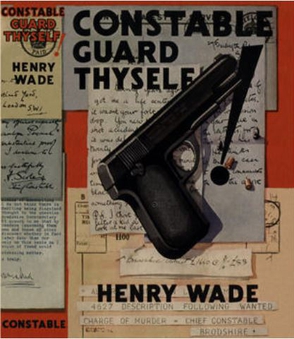
Constable Guard Thyself is a 1934 mystery detective novel by the British writer Henry Wade. It was the third in a series of seven novels featuring the character of Chief Inspector Poole, although it was preceded by the 1933 short story collection Policeman's Lot in which seven of the twelve stories had featured Poole. After his more experimental novel Mist on the Saltings Wade returned to the traditional detective model.

The Man Who Grew Tomatoes is a 1959 mystery detective novel by the British writer Gladys Mitchell. It is the thirty second in the long-running series of books featuring Mitchell's best known creation, the psychoanalyst and amateur detective Mrs Bradley.

The Bell of Death is a 1939 mystery detective novel by Anthony Gilbert, the pen name of British writer Lucy Beatrice Malleson. It is the sixth in her long-running series featuring the unscrupulous London lawyer and detective Arthur Crook. It was published during the Golden Age of Detective Fiction. Reviewing it for the Times Literary Supplement, Maurice Percy Ashley commented "as usual with Mr. Gilbert’s stories this is exciting and well written, but it is so complicated that the reader can do little more than hold his breath".
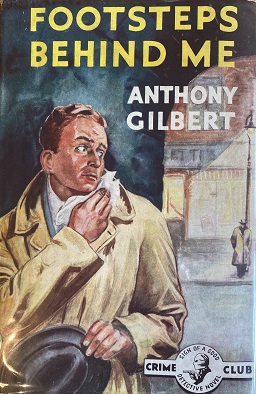
Footsteps Behind Me is a 1953 mystery detective novel by Anthony Gilbert, the pen name of British writer Lucy Beatrice Malleson. It is the twenty seventh in her long-running series featuring the unscrupulous solicitor and detective Arthur Crook. Crook first appeared during the Golden Age of Detective Fiction, but the series ran for several decades. It was published in the United States under the alternative title Black Death.
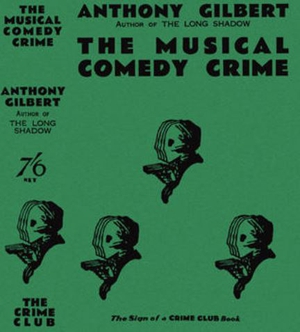
The Musical Comedy Crime is a 1933 mystery detective novel by Anthony Gilbert, the pen name of British writer Lucy Beatrice Malleson. It is the seventh entry of the series featuring Scott Egerton, her principal character before her better known creation Arthur Crook appeared three years later. A traditional whodunnit, it was published during the Golden Age of Detective Fiction.

The Tragedy at Freyne is a 1927 mystery detective novel by Anthony Gilbert, the pen name of British writer Lucy Beatrice Malleson, her first novel under the pseudonym. It introduced the amateur detective Scott Egerton, who was her principal character until the creation of Arthur Crook in Murder by Experts.

The Mystery of the Open Window is a 1929 mystery detective novel by Anthony Gilbert, the pen name of British writer Lucy Beatrice Malleson. It is the fourth novel in a series featuring her amateur detective, the politician Scott Egerton. Unlike the rest of the series it was published by Gollancz rather than Collins. It takes the form of a locked room mystery, a popular branch of the genre during the Golden Age of Detective Fiction.

Lady Killer is a 1951 mystery thriller novel by Anthony Gilbert, the pen name of British writer Lucy Beatrice Malleson. It is the twenty fifth in her long-running series featuring the unscrupulous London solicitor Arthur Crook, one of the more unorthodox detectives of the Golden Age.

Death Knocks Three Times is a 1949 mystery thriller novel by Anthony Gilbert, the pen name of British writer Lucy Beatrice Malleson. It is the twenty second in her long-running series featuring the unscrupulous London solicitor Arthur Crook, one of the more unorthodox detectives of the Golden Age.

Released for Death is a 1938 crime thriller novel by British writer, Henry Wade. Wade was a writer of the Golden Age of Detective Fiction, best known for his series featuring Inspector Poole. This was amongst a number of stand-alone novels he wrote. It has elements of an inverted detective story, rather than the traditional closed circle of suspects.
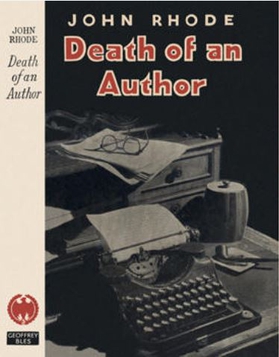
Death of an Author is a 1947 detective novel by John Rhode, the pen name of the British writer Cecil Street. It is the forty fifth in his long-running series of novels featuring Lancelot Priestley, a Golden Age armchair detective. The New Yorker described it as "Rather pleasant, in a ponderous fashion" while Will Cuppy, writing in the New York Herald Tribune, felt "Mr. Rhode provides one of those satisfying British stories in the old tradition, full of mystery meat and brain-work."
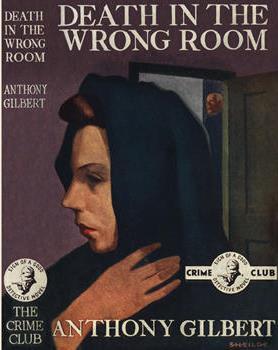
Death in the Wrong Room is a 1947 mystery thriller novel by Anthony Gilbert, the pen name of British writer Lucy Beatrice Malleson. It is the nineteenth in her long-running series featuring the unscrupulous London solicitor Arthur Crook, one of the more unorthodox detectives of the Golden Age.

The Scarlet Button is a 1944 mystery thriller novel by Anthony Gilbert, the pen name of British writer Lucy Beatrice Malleson. It is the fourteenth in her series featuring the London solicitor Arthur Crook, one of the more unscrupulous detectives of the Golden Age. It was published in the United States, initially under the same name and later with the alternative title Murder is Cheap.
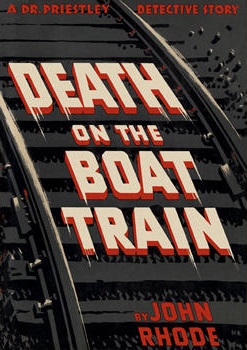
Death on the Boat Train is a 1940 detective novel by John Rhode, the pen name of the British writer Cecil Street. It is the thirty second in his long-running series of novels featuring Lancelot Priestley, a Golden Age armchair detective. As in most of the later novels much of the detective footwork is done by Inspector Waghorn of Scotland Yard. The construction of the murder setting bears similarities to Death in the Tunnel, written by Street under his other pen name Miles Burton. With its focus on seemingly unbreakable alibis and railway and ship timetables, it is also similar in style to the Inspector French novels of Freeman Wills Crofts.
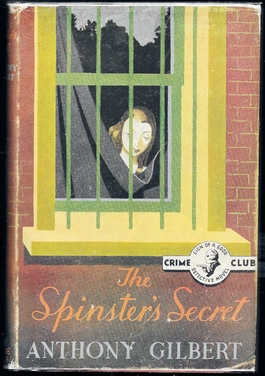
The Spinster's Secret is a 1946 mystery detective novel by Anthony Gilbert, the pen name of British writer Lucy Beatrice Malleson. First published in London by the Collins Crime Club it is the eighteenth in her long-running series featuring the unscrupulous London solicitor Arthur Crook, one of the more unorthodox investigators of the Golden Age of Detective Fiction. It was published in the United States by Barnes under the alternative title By Hook or By Crook.

Death in the Quarry is a 1934 detective novel by the British authors G. D. H. Cole and Margaret Cole. It was the twelfth in their series of novels featuring Superintendent Wilson, one of the many investigators of the Golden Age of Detective Fiction. It was published by the Collins Crime Club.

With a Bare Bodkin is a 1946 detective novel by the British author Cyril Hare. It was the second in his series featuring the lawyer Francis Pettigrew and also saw the return of Inspector Mallet of Scotland Yard who had appeared in the previous book Tragedy at Law. The title is taken from the To be, or not to be speech in William Shakespeare's Hamlet. It was inspired by the author's time working for the Minister of Economic Warfare during the Second World War.

When the Wind Blows is a 1949 detective novel by the British author Cyril Hare. It is the third in his series of five novels featuring the amateur detective Francis Pettigrew, a barrister. It was first published in London by Faber and Faber and released in the United States by Little, Brown under the alternative title The Wind Blows Death.

That Yew Tree's Shade is a 1954 detective novel by the British writer Cyril Hare. It was the fourth novel in his series featuring Francis Pettigrew, a barrister and amateur detective. It also sees the return from his previous novel When the Wind Blows of the humourless police officer Trimble, now promoted to Superintendent. The novel's setting of a fictional beauty spot in southern England was inspired by Box Hill in the author's native Surrey. The title is taken from a line in Thomas Gray's Elegy. It was first published in London by Faber and Faber and released in the United States by Little, Brown under the alternative title Death Walks the Woods.

Tenant for Death is a 1937 detective novel by the British writer Cyril Hare. His debut novel, it was a reworking of a play Murder in Daylesford Gardens had written. It introduced his first detective character Inspector Mallett of Scotland Yard who recurs through Hare's novels including in the series featuring the lawyer and amateur detective Francis Pettigrew. In style Mallett resembles Chief Inspector French, created by Freeman Wills Crofts.




















